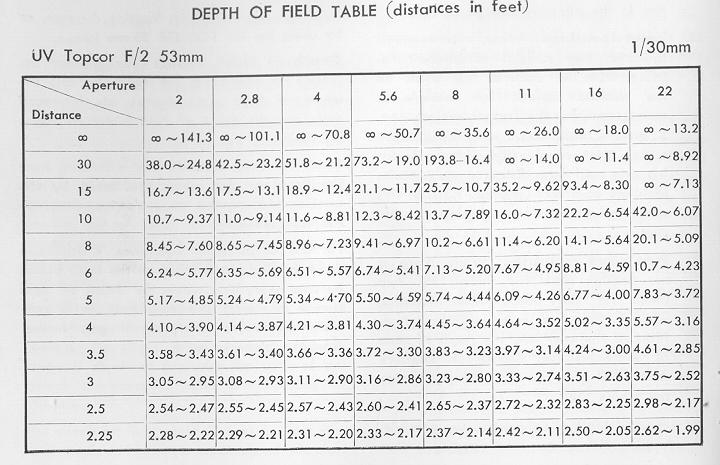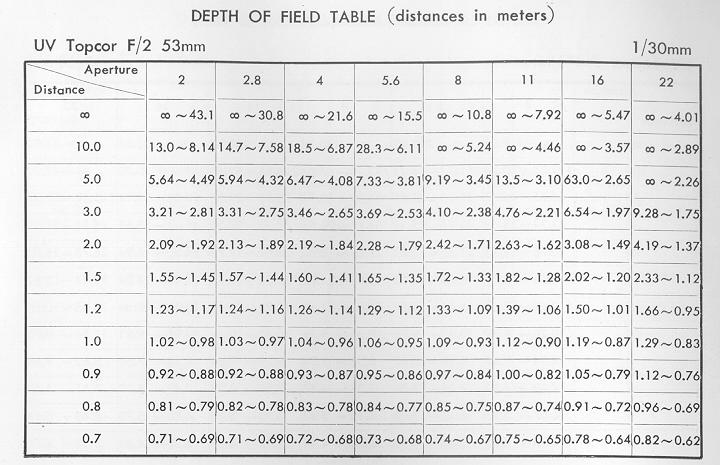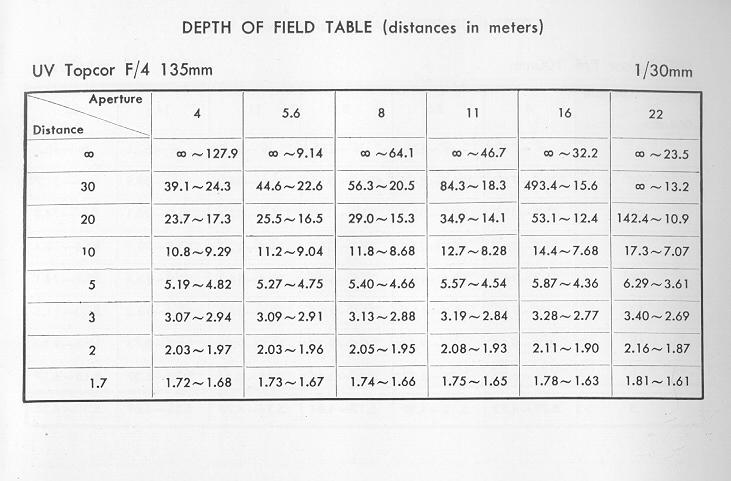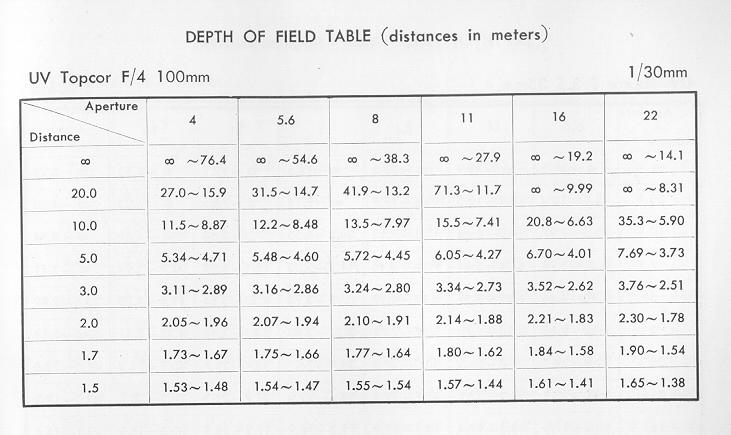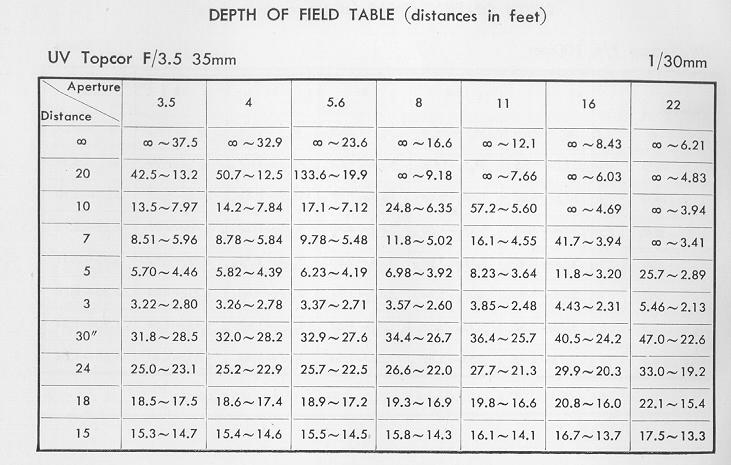and historical purposes, all rights reserved.
This page is copyright© by
This page may not be sold or distributed without
the expressed permission of the producer.
I have no connection with any camera company.
This camera manual library is for reference
and
historical purposes, all rights reserved.
This page is copyright© by
![]() M. Butkus, NJ.
M. Butkus, NJ.
This page may not be sold or distributed without
the expressed
permission of the producer.
I have no connection with any camera company.
On-line camera manual library
If you find this manual useful,
how about a donation of $3 to:
M.
Butkus, 29 Lake Ave.,
High Bridge, NJ 08829-1701
and send your e-mail address
so I can thank you.
Most other places would charge
you $7.50 for a electronic copy
or $18.00 for a hard to read Xerox copy.
Back to main camera manual page
Click
here for PDF version of this
Beseler Topcon Auto 100 manual
- better printing
Problems opening PDF files or
printing problems
- click here

BATTERY INFO - It's not stated in the manual
|
At least two Topcon models (the Super DM and the 135EE) required the 1.35 volt PX-13 mercury battery (also known as the PX-625.) This battery is no longer available however there are several options discussed in our article "Overcoming the Mercury Battery Ban" (hyperlinked below.) The least satisfactory choice is using the alkaline PX-625A - it will lead to underexposed pictures unless you modify your exposure or film speed setting. One Topcon resource which may know the answer is The Topcon Collection |
ELECTRIC-EYE PICTURE-TAKING
1. Set film speed (ASA 25 to 400 or DIN 15 to 27).
2. Set shutter
speed (1/8 to 1/500 see.).
3. Set aperture ring to AUTO.
4.
Advance film winding lever.
5. View-focus through the lens, and check
aperture reading.
6. Press shutter release button.
IMPORTANT
1. Don't touch the surface of the lens, mirror, eyepiece, as well as exposure
window.
2. Stroke the film winding lever all the way- until It stops.
3. Wait until the shutter action is completed before stroking the film winding
lever.
4. Cover the lens when not In use.
5. Don't force movements but retread
instructions once more.
6. If your BESELER TOPCON AUTO 100 camera needs
repair, don't do it yourself but contact the nearest authorized dealer.
CONTENTS
|
BESELER TOPCON AUTO 100 CAMERA ....... 1 SPECIFICATION .... 3 NOMENCLATURE .... 5 CORRECT EXPOSURE .... 9 ELECTRIC EYE AUTOMATION .... 9 COUPLED EXPOSURE SETTING .... 11 FREE EXPOSURE SETTING .... 15 SHUTTER ACTION .... 16 SELF TIMER .... 17 CABLE RELEASE .... 17 VIEW-FOCUSING .... 17 COMPOSITION .... 17 FOCUSING .... 18 DEPTH OF FIELD .... 20 INFRARED INDEX .... 31 HOLDING THE CAMERA .... 32 HORIZONTAL HOLDING POSITION .... 32 VERTICAL HOLDING POSITION .... 33 FILM LOADING .... 34 OPENING CAMERA .... 34 LOADING CAMERA .... 34 CLOSING CAMERA .... 35 ADVANCING THE FILM .... 36 |
EXPOSURE COUNTER .... 37 FILM SPEED INDICATOR .... 37 FILM UNLOADING ... 39 REWINDING .... 39 UNLOADING .... 39 LENS EXCHANGE .... 40 STANDARD LENS .... 41 WIDE-ANGLE LENS :.... 41 TELEPHOTO LENSES .... 41 REMOVING THE LENS .... 42 ATTACHING THE LENS .... 42 LENS COVERS .... 42 FLASH PHOTOGRAPHY .... 43 FLASH ILLUMINATION .... 43 FLASH SYNCHRONIZATION ... 44 FLASH EXPOSURE .... 44 TOPCON ACCESSORIES .... 46 TOPCON FILTERS .... 46 TOPCON LENS HOODS . .... 47 TOPCON CLOSE-UP LENSES .... 50 STORAGE & CARE .... 50 |
BESELER TOPCON AUTO 100 CAMERA
Congratulations, on your choice of the BESELER TOPCON AUTO 100 camera which
has been designed by our engineers and optical scientists to give an ideal
camera fulfilling the following basic requirements:--
1. Single
lens reflex--for viewing and focusing of the exact subject image as it will be
captured on the film.
2. Electric Eye automation--for automatically
setting the correct exposure to the camera simply by pointing it at the subject.
3. Complete lens interchangeability--for changing from the standard to the
wide-angle or telephoto as the requirements of the picture may demand.
4. Superior UV lens coating--for producing crisper black-and-white shots and
true-to life color pictures.
But, besides these basic requirements,
the camera also incorporates all the complicated mechanism that make
picture-taking completely automatic, such as:--
1.
Fully automatic instant re-opening lens diaphragm action--for holding the lens
at wide aperture, for view-focusing ease, but stopping it down automatically to
the selected aperture for the shutter action and then re-opening it once more to
wide aperture.
2. Quick-as-a-wink mirror
action--which, in coupled action with the automatic lens diaphragm action,
swings the mirror up and out of the way for shooting and then snaps it down once
more, quick-as-a-wink, for view focusing.
3. Single
stroke film winding lever action-- not only advances the film one frame, but
advances the exposure counter, charges the shutter and sets up the automatic
lens diaphragm action.
4. Automatic re-setting
additive exposure counter.
5. Automatic pop-up
rewind button.
And, as an additional bonus, the camera also has:--
1. Complete electric eye automation with all interchangeable lenses.
2. Special UV filter effect on all interchangeable lenses.
3. Aperture scale visible in finder, even with electric-eye automation.
4. Manual over-ride of electric-eye automation for shutter coupled
exposure settings or complete freedom in exposure settings.
In other
words, the camera is the ideal family camera because it can be used by every
member of the family, from the person who only wants an automatic camera to take
care of all exposure setting problems, the person who wants a built-in exposure
meter coupled to the camera for some freedom to adjust exposures, the person who
wants a camera with a choice of wide angle or telephoto lenses, which are not
auxiliary lenses or which leave behind some component and merely exchange the
front elements, to the person who would just rather set exposures according to
experience,--because the camera is not a simple automatic camera but a
well-built and designed camera which will satisfy even the demands of the
advanced amateur.
While operation is very simple, may we suggest that you
read the instructions through carefully so that you familiarize yourself with
its working parts before you even load film in the camera.
SPECIFICATION
Lens: UVTopcor 1:2 f-53mm 6
element standard lens. Fully automatic instant re-opening lens diaphragm.
Straight helicoil focusing from 70cm to infinity.. Bayonet mount lens
interchangeability of complete lens. Apertures: f/2, 2.8, 4, 5.6, 8, 11, 16 and
22.
Shutter: SEIKOSHA SLV behind-lens type.
Speeds: B. 1, 1/2, 1/4, 1/8, 1/15, 1!30, 1/60, 1/125, 1/250 & 1/500
sec. MXV-switch (for M and X settings flash synchronization and self-timer).
Finder: Fixed eye-level Pentaprism finder, with 0.75X image (standard
lens), and 34.5 X23mm finder screen. With TOKOBRITE fresnel lens plate and
micro-prism focusing spot. Meter needle and aperture scale, indicates aperture
readings.
Exposure: AUTO--Electric-eye automation.
Range: EV 5 to EV 18, with ASA 100 film.
Film speeds:
ASA 25 to 400 (DIN 15 to 27). Shutter speeds: 1/8 to 1/500 sec.
COUPLED--Shutter coupled exposure setting. Range: EV 5 to EV 18, with
ASA 100 film. Film speeds: ASA 25 to 400 (DIN 15 to 27). Shutter speeds: 1/8 to
1/500 sec.
MANUAL--Complete freedom in
apertures/shutter speeds. Range: EV 2 to EV 18, with ASA 100 film. Film speeds:
ASA 25 to 400 (DIN 15 to 27). Shutter speeds: B. 1 to 1/500 sec.
Film Winding: 180 ° single stroke.
Other Features:
Red warning area indicating automatic exposure is not possible (shutter may be
released).
Wink mirror system (instant return mirror action).
Automatic pop-up rewind button.
Fixed accessory shoe.
Size & Weight:
With standard lens:
136mmX93mmX84mm; 840 grams.
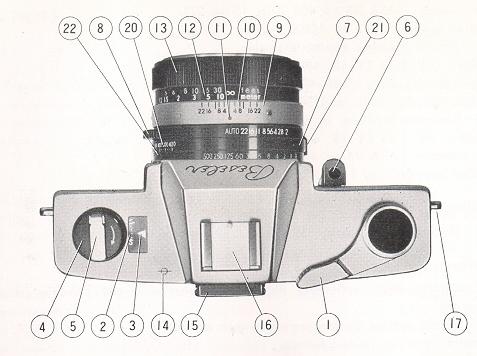 |
(1) Film winding lever (2) Exposure counter scale (3) Exposure counter index (4) Rewind knob (5) Rewind crank (6) Shutter release button (7) Shutter speed ring (8) Aperture ring (9) Depth of field scale (10) Infrared index |
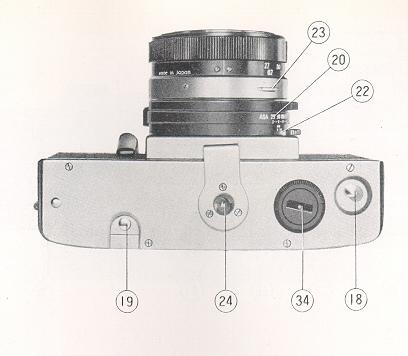 |
(11) Distance [aperture) index (12) Distance scale (13) Distance focusing ring (14) Film plane indicator (15) Eyepiece (16) Accessory shoe (17) Shoulder strap lug (18) Back cover lock (19) Rewind button |
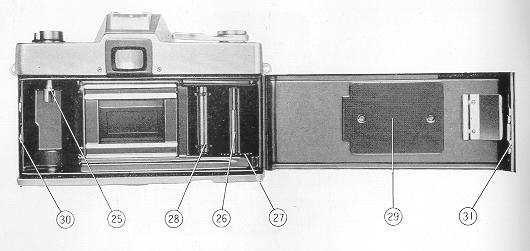 |
(20) Film speed scale (21) Film speed adjustment catch (22) Film speed index (23) Lens locking lever (24) Tripod socket (25) Film Carthage shaft |
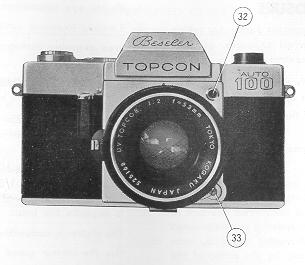 |
(26) Film take-up spool slit (27) Film take-up spool serrated flange (28) Film transport sprocket (29) Film pressure plate (30) Back cover lock (31) Bock cover catch (32) Flash socket (34) Battery cover |
CORRECT EXPOSURE
One of the most important
factor for taking better pictures is correct exposure, which is the relationship
between--
1. The shutter speed, and
2. The aperture (lens
opening), as decided by
3. The brightness of the subject, and dependent on
4. The sensitivity (speed) of the film loaded in the camera.
In other
words, it is important to be able to correctly judge the brightness of the
subject, in order to determine the correct aperture to be used, because film
speed is pre-determined by the film used and shutter speed is, more often than
not, decided by the action of the subject
In the BESELER TOPCON
AUTO 100 camera three methods of setting the correct exposure adjustments to the
lens and shutter are possible--
1. Electrrc-eye automation.
2. Coupled exposure setting.
3. Free exposure setting.
ELECTRIC-EYE AUTOMATION:
Presuming that the film is already
loaded in the camera and the film speed set to the camera, the only actions
required for taking pictures are:--
1. Set the shutter speed ring
(7) to one of red-colored speeds 1/500 to 1/8 sec., by revolving the ring until
the required speed is opposite the index. The shutter speeds will click-stop
into place. Use the shutter speed guide for choosing the most suitable speed for
the lighting condition or action.
2. Set the aperture ring (8) to
AUTO, which will set the electric-eye system into operation.
3. Check the aperture seen on the left border of the finder and if the exposure
needle is not in the red warning areas and is satisfactory, press the shutter
button (6), and the picture will be taken. If the exposure needle is in the top
red area, the picture will be under-exposed, while, if in the bottom red area,
the picture will be over-exposed. If the former, revolve the shutter speed ring
to the left, and, if the loser, to the right, which will have the affect of
moving the exposure needle towards the middle area, in both cases, where the
picture can be taken.
When revolving the shutter speed ring, in the above
instances, do not move the shutter speed scale outside the 1/500 to 1/8 sec.
range.
The shutter can be released even when the noodle is in the red
areas so the position of the needle must always be checked.
Of
course, it is taken for granted that the film winding lever is also advanced, as
well as view focusing being undertaken, before the shutter is released.
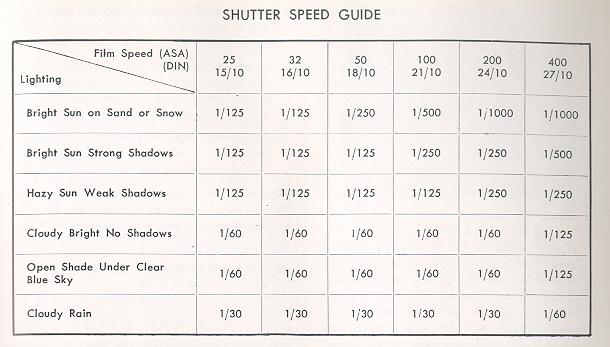
COUPLED EXPOSURE SETTING:
When the subject has
too much contrast, or the bock-light is brighter than the front-light, or if you
want to take a close-up reading and then move back for the shot, or other wise
want to adjust the aperture setting to take into account possible over- or
under-over exposure on electric-eye automation, try coupled exposure setting:--
1. Set the shutter speed to one of the rod colored shutter speeds, i.e., f ram
1/500 to 1/8 sec., the same as for electric-eye automation.
2. Take
the aperture ring off AUTO, by revolving it to any other setting on the ring.
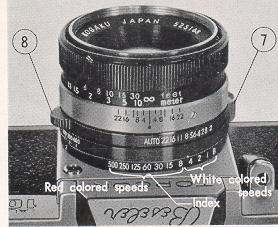 |
3. Point the camera lens at the subject and read the aperture
setting indicated on the aperture scale in the finder. 4. Transfer the aperture reading to the aperture ring, i.e., revolve the aperture ring until the same aperture is opposite the index (11), or modify it and then transfer it, if this is preferred. 5. Press the shutter release button. |
Coupled exposure setting is suitable for those shots in which--
1. The background is very light and covers a greater area than the main
subject of interest, which is also darker; because the exposure reading will be
dominated by the lighter background and the main interest will be under-exposed.
For example, shots against distant scene, or against snows capes, etc.
2. The opposite of the above, such as in night clubs, circuses, etc.,
in which the reading will be dominated by the darker background and the main
interest will be over-exposed.
3. The main subject is
back-lighted, because the subject's face will not be illuminated by the main
light and will be under-exposed, if the reading is taken for the full subject
area.
4. The main subject is in the shade, because
the reading will again be dominated by the surrounding light and will thus be
under-exposed.
For the above shots, as well as for other shots, the
exposure reading should be taken as follows:--
1.
Landscape: Shield the camera taking lens (34) f ram the light reflected by the
sky and point it so that it will be taking a reading of an area having less sky
than the general overall scene, because the sky is much brighter than the
general scene and if too much sky is included the overall effect will be
over-exposure.
2. Subject against the open sky: When shooting airplanes, flags, buildings, etc., against an open expanse of sky, take an exposure reading of a similar object with the light striking it at the same angle as the subject and modify it by 1/2 stop loss.
3. Contrasty subject: First decide what effect you are looking for in the final picture and take an exposure reading of the portion which interests you the most, letting the contrasty portion (lighter or corker portion) get lighter or darker, as the case may be.
4. Inaccessible subjects: If the subject is too far off,
take an exposure reading of a similar subject i.e.., same texture and lighting
condition) at close distance.
5. Back lighted subject: The best
method is to move in and take a close-up exposure reading of the front-lighted
subject area only, using care to see that the bock-light does not effect the
reading. Otherwise, modify the exposure reading taken at the picture-taking
position 3 or 4 times to take into account the excessive contrast between the
back-light and the front-lighted area.
6. Portrait: Move in close and take a reading of the face area
that should stand out in the final picture. If contrast is extreme, between the
high-lights and shadows, take a reading of both portions and average it, if you
want both portions, or otherwise take a reading of the interesting portion at
about 4 inches or so. See that the camera's shadow is not cost on the area being
read.
Note:
(1)
When using the f/3.5 wide angle or f/4 telephoto lenses, it is not possible to
take shots at larger apertures than the maximum aperture of the lens attached to
the camera. Thus, if the exposure needle indicates a reading of f/2 or f/2.8,
etc., the shutter speed ring should be revolved to a slower speed, in order to
bring the needle within maximum opening of the lens used.
(2) When using film other than ASA 100 and 200, the exposure reading
can be unusable even when the exposure needle is not in the red warning areas.
This is especially when a fast Elm is used at a slow shutter speed, or o slow
film used at the fastest shutter speed. The following combinations of shutter
speed and f stops should never be relied upon for setting exposure.
ASA 400 film - f/2 & 1/8 sec.
ASA 50 film f/22 & 1/500 sec.
ASA 25 film f/16 & 1/500 sec.
(3) To use a shutter
speed slower than 1/8 sec., use the aperture reading for 1/8 sec. in order to
take a reading. Then re-adjust, by stopping down the lens diaphragm by the same
number of steps as the exposure time is increased, as follows:--
Shutter speed: 1/8--1/4--1/2--1
Aperture: 4-- 5.6 -- 8 --11
FREE EXPOSURE SETTING:
Although only full numbers are used on the
ring, it should be remembered that 500 is 1/S00 sec., and 1 is a full 1 sec. and
that, therefore, the larger number is the faster speed, meaning that the shutter
remains open only for a 1/500 sec. duration during which time the light passes
only 1/2 as long as the preceding larger number and vice versa; thus if lighting
conditions remain unchanged, decreasing the speed will mean that the aperture
will have to be opened to compensate for less light.
The choice of
shutter is dependent on the lighting condition, as well as the need for stopping
action. The brighter the light, the faster the speed that may be used, and vice
versa. On the other hand, for stopping action, it should be noted that (1) a
faster speed is required for a speedier subject, (2) a faster speed is needed
for movement nearer to the camera, (3) a faster speed is required for a subject
moving parallel to the camera, while a slower speed may be used for movement
towards or away from the camera, and (4) the degree of stopping required will
also determine the speed to be used.
The aperture ring has
apertures or openings, called f/numbers, with exposure ratios, as follows:--
| Aperture | 2 | 2.8 | 4 | 5.6 | 8 | 11 | 16 | 22 |
| Exposure ratio | 1/4 | 1/2 | 1 | 2 | 4 | 8 | 15 | 30 |
The aperture or lens opening controls the amount of light that enters the
lens and passes through to the film plane, by adjusting the lens opening as
required. It can be seen that the larger numbers are the smaller openings and
vice versa and that each smaller aperture permits only 1/2 the amount of light
of the preceding larger aperture and that, therefore, if lighting conditions
remain unchanged, stop ping down will require a corresponding increase in the
shutter speed.
In other words, if the shutter speed is originally
set to 1/60 sec. for f/8, then it must be increased to 1/125 if the aperture is
opened to f/5.6 or to 1/30 if the aperture is stopped down to f/ 11.
Exposure settings in this case will have to be decided by:
1. Using
o suitable exposure meter, or,
2. Using an exposure chart, such as is
usually included with the film, or,
3. Making your decision based on post
experience.
SHUTTER ACTION:
Since all the UV TOPCOR lenses are
equipped with the fully automatic lens diaphragm action, the lens opening is
always opened at the widest aperture for view-focusing ease. This means that the
lens diaphragm must automatically close down to the required opening when the
shutter button is pressed, and then open immediately back to the widest aperture
--but, besides this, there are various other related actions which all take
place in less than l/10th of a second when the shutter is pressed, such as:--
1. The shutter blades close down completely.
2. The reflex mirror rises,
the film blind opens fully and the lens diaphragm is stopped down.
3. The
shutter blades open and close (for taking the picture).
4. The film blind
opens, the mirror returns to reflex viewing position, and the lens diaphragm
opens fully.
5. The shutter blades open fully.
The action of the lens diaphragm is the result of the "fully automatic instant
re-opening lens diaphragm action", while that of the reflex mirror is the
product of the "quick-as-a-wink mirror action", both of which are required to
produce the fast action required for taking the picture without loss of image.
When using slow shutter speeds, always wait until the shutter action is finished
before advancing the film winding lever.
SELF-TIMER:
For the purpose of delaying the actual shutter release action for 10 sec., after
the shutter release button is pressed, use the built-in self-timer. After all
preparations for taking the exposure have been completed, shift the MXV-switch
133) until V is aligned with the index, and then press the shutter release
button as usual.
By utilizing the self-timer, it will be possible
to take your own photograph, or hold lighting equipment or reflector, or used it
for minimizing camera vibration on the tripod.
Even when the
self-timer is used, Electric-Eye automation takes place and the correct exposure
for the lighting condition when the shutter is released is set to the camera.
Always return the MXV-switch to X-setting when not in use.
CABLE RELEASE:
When using the camera on the tripod, etc., use a
cable release screwed into the shutter release socket, instead of pressing the
shutter button, as it will eliminate camera vibration.
VIEW-FOCUSING
Two other important factors for getting bettor
pictures are:--
1. Correct composition of the subject within the
film negative area, and
2. Accurate focusing of the image on the film
plane.
In the BESELER TOPCON AUTO 100 camera both these factors are
taken care of by single system, i.e., view focusing through the camera lens.
COMPOSITION:
Since the reflected light from the subject, which
passes through the camera lens to the film plane for taking the picture, is
intercepted by the reflex mirror, which is placed in the light path, and
reflected upwards to the finder's focusing screen:--
1. Parallax is
completely eliminated, because the viewing and taking lens are the same, and you
can compose exactly as it will be taken in the picture, and
2. The same
area seen in the finder will be covered in the final picture.
Furthermore, the eye-level Pentaprism finder, which reverses the laterally
reversed image reflected upwards by the reflex mirror, gives the following
advantages:--
1. A right side up laterally correct
image, moving in the same direction as the actual subject, is especially
valuable for moving subjects.
2. Because of the erect
laterally correct image, both eyes can be used, one for looking through the
finder and one for viewing the general scene.
3.
Eye-level viewing also means correctly lateral and erect images in vertical
formats.
FOCUSING:
Since view-focusing is
through the camera lens, all focusing adjustments are made directly on the lens
itself by revolving the distance focusing ring (13). and checking the effect on
the focusing screen in the finder.
The focusing screen has:--
1. A micro-prism focusing spot.
2. A fine focus ring, around the spot.
3. A full-area ground glass, boosted by Fresnel lens.
Micro-Prism Focusing Spot:
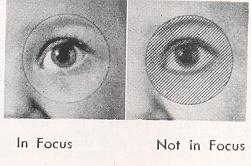 |
The focusing spot in the center is made up of numerous
microscopic prisms which break up the image when it is not in focus so that the
image is seen indistinct and blurred. When the distance focusing ring is
revolved and the subject is accurately focused, the image in the focusing spot
will be seen distinctly and sharply. Subjects with linear features will be particularly effective for focusing because the straight lines will look ragged and broken up when out of focus but will be seen straight when in focus. |
When in doubt, revolve the distance focusing ring either ways from what is
considered optimum focusing and check the effect.
Fine Focus Ring:
Around the micro prism focusing spot can be seen a clear ring which is made of
extra-fine ground glass only. This ring may also be used, either singly or in
combination with the focusing spot, for focusing of subjects without linear
features.
When the distance ring is revolved and the subject is
correctly focused, the finder image will be seen distinctly and sharply, while,
if focusing is not correct, the subject will be seen blurred and indistinctly.
As with the focusing spot, revolve either ways of the optimum focus to
check whether focusing is correct or not.
Full-Area Ground Glass:
The full-area of the focusing screen, except for the focusing spot and fine
focus ring, is fine ground glass backed by a fresnel plate lens for obtaining a
brilliantly illuminated subject field from edge to-edge, without dark corners.
In other words, the whole subject area is always distinctly seen and may be
focused on the full ground glass area.
Focusing is done in the same
manner as for the fine focus ring and focusing spot.
For speedier
focusing, use the full focusing screen, combining all the focusing means, i.e.,
focusing spot plus fine focus ring plus full ground glass, because it will also
mean that composition and focusing can be undertaken at the same time.
The distance actually focused can be checked by reading the distance scale (12)
opposite the distance index (11).
DEPTH OF FIELD:
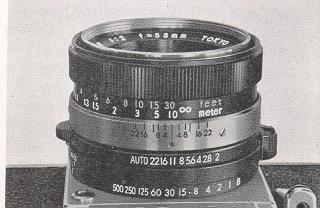 |
When you have focused on a certain subject (plane), it will be seen that not only that subject but other subjects, both in front and behind the main interest, will also be seen sharply, although this will not be true for everything before or behind the main interest. In other words, when a subject has been focused at a certain distance, the lens presents an apparently sharp image not only at the focused distance but also at somewhat farther and nearer distances. This zone of apparent sharpness is known as the depth of field and the rules governing the extent of the depth of field are:-- |
1. The depth of field is greater as the diaphragm
(aperture) is closed down, and least as the diaphragm is opened up. In other
words, the wide-open aperture of the fully automatic lens always shows the least
depth of field and is valuable for precise focusing.
2. The depth of field is greater as the focused distance
increases and least as the camera-to-subject distance decreases.
3. The depth of field is greater behind the focused subject (in
the background) and shallower before the focused subject (in the foreground) but
grows progressively equal as the focusing distance gels shorter.
4. The depth of field increases when the UV TOPCOR 35
mm wide-angle lens is attached and decreases when the UV TOPCOR 100 mm telephoto
lens is used, both in comparison to the standard UV TOPCOR 53 mm lens.
The depth of field of the lens can be utilized for getting pictures with
backgrounds or foregrounds out of focus, or for getting subjects in the
foreground and background sharply, or for covering the deepest possible range in
action shots, etc.
Depth of Field Scale: The depth of field scale (9), on
the lens barrel, is utilized for checking the scope of the depth of field
because it shows at a glance the zone of apparent sharpness at any lens opening
or distance.
The depth of field scale is next to the distance scale (12)
and is made up of identical pairs of apertures on both sides of the distance
index ( 11 ), which also represents the widest aperture of f/2. These identical
pairs of apertures indicate the distance that will be in focus at these lens
opening.
1. Finding the depth of field: example, if the lens opening is
f/11 and the distance focused is 10 meters (as in the illustration), read the
distances opposite the aperture f/11 (the line between 8 and 16) on both sides
of the depth of field scale which will show that the depth of field extends from
approximately 4.5 meters to infinity. On the other hand, if greater
depth of field is required, see which lens opening will cover the required
field. If, for example, the zone should extend from 3 meters, it will be seen
that f/22 will give the required depth of field which will be from about 3
meters to infinity.. Of course, shutter speed will have to be decreased to
compensate for the reduction in the effective amount of light.
2. Zone focusing: When it is required to cover two subjects at
different distances from the camera, first focus on the nearest subject, for
example, 2 meters, and then the farther subject, say, 5 meters, both found with
the distance scale. Next, revolve the distance focusing ring until these
distances are opposite identical apertures (approx. f/16, in this case) and use
this lens opening for the shot.
3. Fast zone focusing: When there is not enough time for
finding the two limits for the above zone focusing method, focus on a subject
about two fifths of the way into the required zone of sharpness and choose an
aperture which will give sufficient sharpness over the whole field.
Increase the depth of field, whenever possible, by stopping down the lens opening rather than by increasing the focusing distance, or by using the UV TOPCOR 35 mm lens.
Depth of Field Table: For greater accuracy in the depth of
field, because the depth of field scale figures are in round sums, use the depth
of field tables on pages 23 to 30.
In all instances, measure the distances
from the focal or film plane (indicated by the marking (14) on the camera's top
deck) to the main subject.
For critical pin-point sharpness, always use
wide aperture and focus on the main plane, because everything within the depth
of field is not of equal sharpness but, on the contrary, grows less sharp as it
gets farther from the plane of focus.
See last pages for chart.
INFRARED INDEX:
 |
For infrared photography, infrared film is used which is sensitive only to the blue-violet infrared wave lengths whereas panchromatic film is sensitive 10 all the colors of the spectrum. Since focusing is done with the visible point, seen in white light, some
focusing adjustment must be made because the infrared wavelengths are longer in
wave lengths and not visible to the naked eye. The infrared index (10) is the
red line representing f/4 opening on the depth of scale, which should be used
for making such adjustments. |
For infrared photography, use a suitable red filter and read the
instructions, enclosed with film, for determining exposure settings.
HOLDING THE CAMERA
Another important factor for obtaining superior pictures is the proper support
of the camera, not only to provide a steady and comfortable position for holding
the camera but also one that will permit speedy handling for taking successive
pictures.
Horizontal Holding Position:
This is
the holding method for taking pictures in the horizontal format, which is the
most common. Take a firm grip on the distance focusing ring (13), with the left
thumb and left forefinger, resting the camera body on the palm of the left hand.
Next, place the right thumb against the film winding lever (1), with either the
right forefinger or middle finger on the shutter release button (6) and the rest
of the hand cradling the right side of the camera body. The right hand will
advance the film and take the picture, aiming the camera at the same time, while
the left hand will do most of the holding and also take care of focusing.
The camera should be raised to the right eye, leaving the left eye free to take
in the whole field. The elbows should be pressed against the body for support
and the camera should also be pressed against the forehead to minimize camera
movement.
Vertical Holding Position:
Without
changing the basic holding position for the horizontal format, turn the camera
around until the film winding lever is topmost. Now the left side of the camera
body will be supported by the left hand. The right elbow will not be pressed
against the body but will jut out into space, not giving any support to the
camera; but this version is superior to turning it around the opposite way
because the winding lever can still be used for speedy action.
To
keep camera shake at a minimum:--
1. Spread the
legs wide apart for body steadying purpose. Use the body or as much of it as
possible for steadying the camera, such as digging the elbows into the body,
pressing the camera against the forehead, etc.
2. Don't
tense the fingers but hold the camera firmly and leave the fingers free to do
their work.
3. Don't jerk or strongly press the shutter
button but press it smoothly and gently.
4. Whenever
possible use the tripod, especially at the slower shutter speeds 1/15 sec. and
slower.
5. Use props, like desk, chair, tree or anything
that does not move, when the tripod cannot be used.
6.
Pull the neck strap taut, looping it around the wrist, if necessary, to brace
the camera against the body.
FILM LOADING
 |
Use 35 mm film in daylight cartridges which will give either 20 or 36 exposures of 24 mm X 36 mm size black-and-white pictures. There are also colors films of 12, 20 and 36 exposures in the same size. |
Load and unload films away from direct sunlight or strong artificial
illumination, although it will not be necessary to get into a darkened room. Get
in the shade, whenever possible, even if it is your own body shade, and place
the camera on the table or lap so that it will not be dropped accidentally.
Opening Camera:
1. Shift the back cover lock (18)
and press it strongly. The back cover will spring open, and, therefore,
2. Pull it open all the way.
Loading Camera:
 |
3. Pull up the rewind knob (4), as far as it will go, and insert a fresh film cartridge into the empty film chamber. The leading end of the film should be pointed in the direction of the take-up spool slit (26). |
4. Push the rewind knob back down into position. If it does
not catch the film cartridge, revolve the rewind knob slightly until the slot on
the film cartridge shaft (25) catches.
5. Pull out
the film about 14-15 cm from the cartridge and insert it as deep as possible
into the take-up spool slit (26). If the slit is not visible, revolve the
take-up spool, with the serrated flange (27) until the slit is topside.
6. Check whether the bottom perforation of the film engages the teeth
of the film transport sprocket (28) and advance the film winding lever (1)
carefully, checking once more whether the top perforation are also fully
engaged.
Closing Camera:
7.
If the top and bottom perforations are fully engaged, close the back cover by
pressing it tightly until it catches and does not open.
8.
Slowly turn the rewind knob (4), in the direction of the arrow engraved on it,
which will tension the film inside the cartridge. Each film winding lever action
will now revolve the rewind knob counter-clockwise, thus indicating that the
film is being advanced properly.
Advancing the Film:
9. Push the
film winding lever with thumb of the right hand until a full stop is made,
as otherwise the shutter button cannot be pressed.
Each film winding lever action takes care of the following actions:--
1. The film is advanced one frame.
2. The exposure counter is advanced one frame.
3. The shutter is charged.
4. The automatic lens diaphragm mechanism is set up for action.
10. Press the shutter release button (6).
11. Repeat actions (9) and (10) once more. The two blanks shots just finished will mean that two frames have been advanced and that the next film winding action will place the third frame into position for actually taking the first shot.
The two blank shots are required because the first two frames are usually
exposed in film loading.
EXPOSURE COUNTER
For
keeping track of the number of exposures taken, the BESELER TOPCON AUTO 100
camera has an automatic exposure counter (2) which works automatically with the
opening and closing of the camera's back cover. In other words, whenever the
back cover is closed, the exposure counter automatically returns to the starting
mark "S".
The two blank shots made in loading the film puts the
exposure counter on the second white dot, indicating that the next film winding
action will place the counter on " 1".
The counter has numerals
1...5...10...15, indicating every fifth shot, up to 35 exposures, with white
lines in between to show each shot.
The numeral 20, as well as the
line after 35, are red-colored, to show when the 20 or 36 exposure film is all
exposed.
FILM SPEED INDICATOR
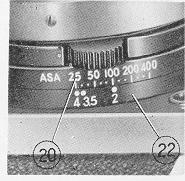 |
Upon loading the film, the film speed index should be set to the proper film sensitivity [speed) of the film loaded in the camera, because it is of prime importance for obtaining correct exposure. Pull the film speed adjustment catch (21), on the shutter speed ring knob (7), outwards, which will free the film speed scale, and revolve the ring to sot the required film speed to one of the following three indexes:-- 2 ...to be used for the f/2 standard lens 3.5...to be used for the f/3.5 wide-angle lens |
There are 13 click-stopping ASA film speeds from 25 to 400, with the
dots between numerals indicating intermediate film speeds.
Check
instructions enclosed with the film for the correct film speed, and if speeds
other than ASA are indicated, use the following conversion table for finding the
corresponding ASA film speed.
| ASA | 25 | 32 | 40 | 50 | 64 | 80 | 100 | 125 | 160 | 200 | 250 | 320 | 400 |
| DIN | 15 | 16 | 17 | 18 | 19 | 20 | 21 | 22 | 23 | 24 | 25 | 26 | 27 |
FILM UNLOADING
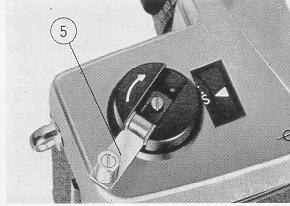 |
After the last exposure is taken, the film should be returned to its cartridge and then taken out for development. When the exposure counter indicates that the last exposure has been made, do not advance the film any more or you will tear it or pull it out of its cartridge. In any case, if the winding lever does not move easily, check the exposure counter to see whether it is the last exposure or not. If so, do not advance the winding lever but leave it half-advanced, as it is, and proceed with rewinding the film. |
At any rate, don't open the back cover, at this time, or you will ruin
your exposed film.
Rewinding:
1. Depress the rewind button (19) strongly.
2.
Unfold the rewind crank (5) from its storage position and revolve it
clockwise, in the direction of the arrow. Rewind smoothly and at an even speed
BECAUSE erratic or too rapid rewinding may cause static electricity marks on the
film.
3. Rewind until tension lessens as the film end
slips out of the take-up spool and then stop rewinding. Do not rewind the
leading end back into the cartridge but leave the tip protruding.
4. Open the back cover, as already noted.
5.Pull
up the rewind knob and lift out the cartridge.
6. Bend
the end of the film (as a sign that the film has been exposed) and place it in
its original package until development.
Note:
The rewind
button may be left depressed because the next film winding lever action will
automatically pop it up.
LENS EXCHANGE
Besides
the standard lens which is supplied with the camera, three other lenses are
available separately and may be used interchanged with the standard lens.
All UV TOPCOR lenses have been specially designed for use on the single lens
reflex camera and are not inferior to, if not superior to, other more expensive
lenses found in focal plane shutter cameras in its resolving power and
rendition.
All UV TOPCOR lenses have been specially coated to cut the
ultra-violet (UV) rays and thus give breath-taking true-to-life color renditions
of outdoor scenes at all times, and eliminate the need for an UV filter outdoors
for black and-white camera work.
All UV TOPCOR lenses are straight
helicoid focusing and incorporate the electric-eye automatic exposure system,
the fully automatic instant re-opening lens diaphragm action, as well as being
coupled with the quick-as-a-wink mirror action, and, moreover, are fully
interchangeable, without any lens element being left behind in the camera, nor
are they simple auxiliary lenses which are attached to the front of the standard
lens.
An exclusive bayonet mount permits simple, accurate and speedy
exchange of the lenses, while the SEIKOSHA SLV No. 00 shutter is incorporated
behind-the-lens, in the body.
Standard Lens:
The standard UV TOPCOR lens is a 553 mm focal length optic, with a fast speed of
f/2, and has 6 elements in 4 groups. The lens focuses down to a close distance
of 70 cm.
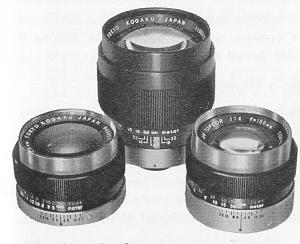 |
Wide-Angle Lens: The UV TOPCOR wide-angle lens has a shorter-than-standard-focal length of 3S mm, and a speed of f/3.5. The lens construction is 6 elements in S groups, and the minimum focusing distance is 40 cm. The lens covers a wider field of view, than the standard lens, at the same camera-to-subject distance, and shows an image which is much smaller and a depth of field which is much deeper. The wide-angle, because of these characteristics, is used for shooting where it is not possible to back up, such as in architectural shots, interior shots, groups in small rooms, etc., as well as for candid shots (because of the deeper depth of field) and exaggerated perspective shots (because of its wide field of view). |
Telephoto Lenses:
The UV TOPCOR telephoto lenses when
compared to the standard lens, cover a more narrow field of view, show a smaller
picture area, a larger image pulled in closer and a shallower depth of field.
The lenses are thus, used for shooting distant objects, which cannot be
approached close enough to isolate and emphasize, and for portraiture because of
their natural perspective and because their shallow depth of field eliminate
distracting backgrounds.
Both telephoto lenses have 5 elements and a
maximum aperture of f/4, but the shorter is 100mm in focal length and focuses
down to 1.5 meters, while the longer lens has a 135mm focal length and focuses
down to 1.7 meters. The former has a 24° field of view and the latter a 18°
angle.
Removing the Lens:
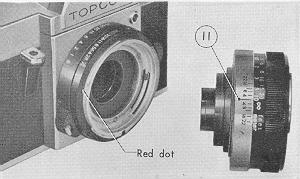 |
Press the lens locking lever (29), which will disengage the lens locking system. Rotate the lens counter-clockwise until it stops, release pressure on the lens locking lover and continue rotation until it makes a full stop again. Then lift it out gently. |
Attaching the Lens:
Line up the red dot, that
serves as the distance index (11), with the red dot on the body flange and
insert the lens carefully. When well-seated, revolve clockwise until it stops
and clicks into position.
Lens Covers:
When not in use, protect the lens surface
with the lens cap. Cover the rear ends of lenses detached from the camera with
rear lens coos.
FLASH PHOTOGRAPHY
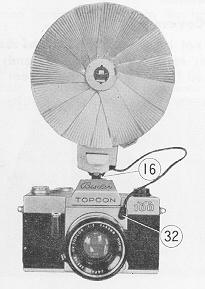 |
When available light is not sufficient for taking pictures at
the desired aperture or speed, or if there is a total lack of illumination, or
if the subject is in the shadow and details are obscured, use artificial
illumination, such as photo lamps, flash bulbs or electronic flash.
As a portable and economical method of artificial illumination, simply mount a flash unit in the accessory shoe (16) on top of the Pentaprism finder, and insert the flash cord plug into the flash socket (32). Larger units should be used with a suitable bracket. The bracket should be fixed to the bottom of the camera, with the fixing screw locking it to the tripod socket (24). |
Flash Illumination:
The various types of flash
bulbs which may be used with the flash unit are classified according to their
time-to-peak (firing delay) or the time it takes from contact until peak
brightness is reached. Class M and Class F bulbs, as well as electronic flash,
can be used with the BESELER TOPCON AUTO 100 camera.
1.
Class F: The firing delay is 4-6 milliseconds. Although light output is
low, the stopping action is a fast 1/200 sec.
2. Class M:
The firing delay is 16-18 milliseconds. The light intensity is very great and,
therefore, it is used when maximum light output is necessary.
In this
class are included the small miniature flash bulbs and all-glass (AG) no base
flash bulbs, both of which give great light output inspire of their very small
sizes.
3. Electronic Flash: There is no firing
delay with electronic flash or strobe-lights. The intensity is not very great
but they may be re-used many times, after a suitable re-cycling period. Of
course, the initial outlay is comparatively expensive and is only suitable for
those users who require artificial illumination quite often. The speed is a very
fast 1/500 or 1/1000 sec. or better, stopping most actions.
Flash Synchronization:
Since the flash bulbs and electronic flash
units, which can be used with the BESELER TOPCON
AUTO 100 camera
have different firing delays, the shutter action must be synchronized so that it
will fire the bulb by closing the flash contact at the appropriate moment for
the time-to-peak of the bulb being used.
Two settings, M-setting
and X-setting, are built into the camera to take care of flash synchronization
when Class M and Class F flash bulbs, as well as electronic flash units, are
used. Simply shift the MXV-switch (33) to M or X, and the flash circuit will be
set up for use of the various flash bulbs and electronic flash. The shutter
speeds that may be used when the various flash illuminations are used at either
of these settings are shown on the following table.
V-setting is for use
of the self-timer; flash synchronization will only be possible on X setting when
the self-timer is used.
Flash Exposure:
In
flash photography, do not use the exposure meter because it
will not work. Consequently, take the aperture scale off
"AUTO".
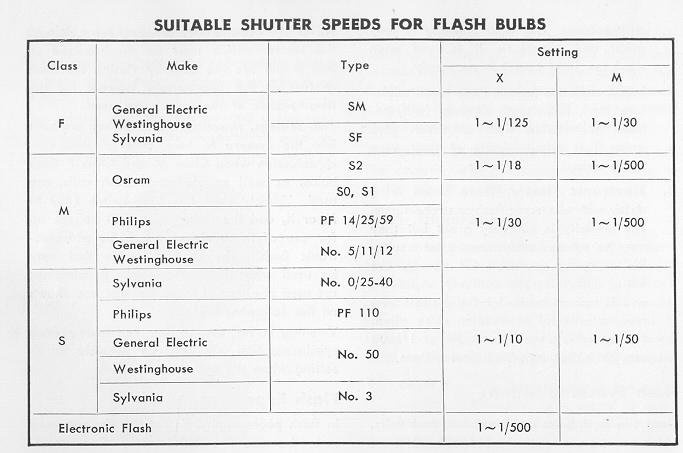
In flash photography with the flash unit on the camera accessory shoe, the
distance focused will be of great Importance for calculating the correct
aperture, because the brightness of light decreases with the square of the
distance, or, in other words, an object 2 meters away will receive only
one-fourth the light of an object 1 meter away.
Find the guide
number for the bulb being used (usually found in the instruction sheet furnished
with the flash bulb and based on the shutter speed and film speed being used),
and divide it by the distance from the flash to subject, which will give the
correct aperture. For example, the guide number is 50 and the distance 3 meters
from flash unit to subject, the aperture will be f/16. This figure is based on
the use of an efficient reflector in a room of average brightness or size. For a
brighter room use a smaller aperture, and for a larger room, or at night
outdoors, use a larger aperture.
TOPCON ACCESSORIES
For a greater enjoyment of
picture-taking with the BESELER TOPCON AUTO 100 camera the following TOPCON
accessories should be used:--
TOPCON FILTERS:
Use filters for obtaining more faithful tonal renditions or for producing
special effects to highlight or dramatize pictures. In black-and white
photography, filters are used for separating color tones which cannot be
truthfully rendered as seen by the human eye. For example, yellow may seem to be
ten times brighter than blue but, on the panchromatic film, blue registers a
brightness only four fifths that of yellow. In other words, filters are use to
control these different tones.
In color photography, on the other hand,
filters are used for balancing light not suitable for the film loaded in the
camera or for correcting color deficiency in the illumination. Since filters cut
off some part of the light that enters the lens, the exposure must be increased
to compensate for the difference; the additional exposure increase, called the
filter factor, is indicated in the following tables, together with the color and
effect of several filters for use on the BESELER TOPCON AUTO 100 camera.
Screw in type filters are available in 49mm and 58mm mounts, which are screwed
into the front mount of the lenses. The 58mm is for the 13Smm telephoto tens,
while the former is for the other three lenses. Most outdoor shots should be
taken with a filter, especially shots of the sky, with or without clouds. The UV
TOPCOR lenses have special UV filtration and thus give crisper black-and-white
shots, and truer color picture, and does not require the attachment of UV
filters.
TOPCON LENS HOODS:
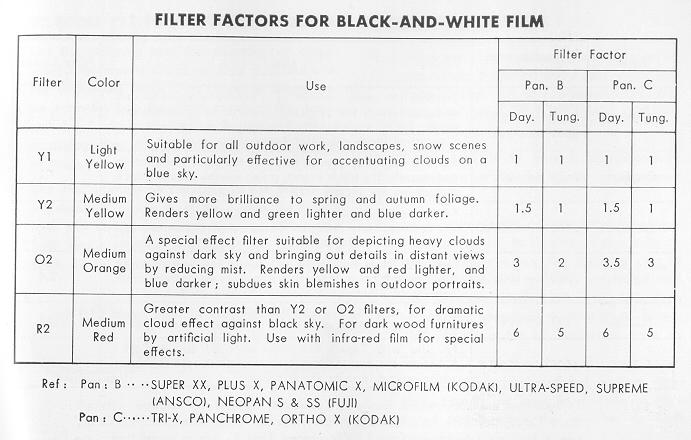
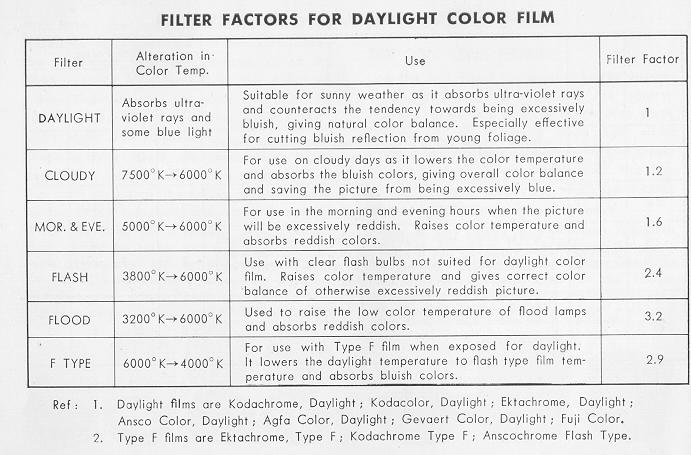
Use the lens hood for getting better pictures in all you shots, but
especially for against the-light shots and artificial illumination shots,
because it will eliminate stray light which might otherwise effect the
brilliance and clarity of the picture. It will also protect the lens surface
from rain or snow which could cause image distortion.
There is one
55mm screw-in lens hood for both the standard and wide-angle lenses, a 55mm
screw-in type for the 100mm telephoto and a 60mm snap-on type for the 135mm
telephoto lens. The wrong hood will cause vignetting and should not be used.
TOPCON CLOSE-UP LENSES:
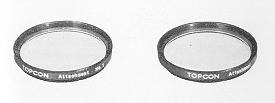 |
Use the close-up lens for shooting at closer subject-to-camera distances than possible with the unassisted lens. Two close-up lenses can be screwed into the filter mount of the standard lens, either singly or together, without changing the single lens view-focusing advantage. The No. 1 close-up lens will cover the focusing distance 70 cm to 40 cm, while the No. 2 lens will cover the range 4S cm to 30 cm, and both lens combined will cover the distances from 32 to 26 cm. |
STORAGE & CARE
1. Store your camera,
lenses and accessories away from humidity, salty air, dust, extremely high or
low temperatures and corrosive fumes, and store in a cool, dry and
well-ventilated place.
2. Don't store it in closed
compartments, containers or in the glove compartment of the car.
3. When storing the camera for a long time, take it out of its leather
case, release the shutter, revolve the focusing ring to infinity, wrap the
camera in a dry and soft lint-free cotton cloth and place it in a tin-lined
container, with a tight cover, and put in a lot of desiccant, such as silica
gel.
4. If the camera is stored for a very long time,
take it out once in a while to give it an airing when the weather is cool and
dry.
5. Protect your camera, lens and accessories against
rain, dust, sand, strong sunlight and salty air outdoors by keeping the cover of
the leather ever ready case closed except for the actual shot.
6.
After using your camera outdoors, always use a blower to blow away the dust, or
a soft hair brush to brush the dust away, and then wipe it clean with a soft
lint-free cloth.
7. Do not clean the lens too often but,
when doing so, always use the blower or soft brush first to get rid of the dust
and then gently wipe it with a lens tissue. If further cleaning is necessary,
very lightly dip a lint-free cloth into plain water, or pure grain alcohol, or
possibly a mixture of alcohol and ether (4: 1 ratio), and lightly wipe the lens
surface in a circular motion. Don't rub the surface on any condition.
8.
If the camera is dropped into the ocean, wash immediately with clean water,
lubricate with good quality oil and send out for repairs at once.
9. Clean the inside of the camera, the reflex mirror and pressure
plate, with a soft brush or air blower only.
